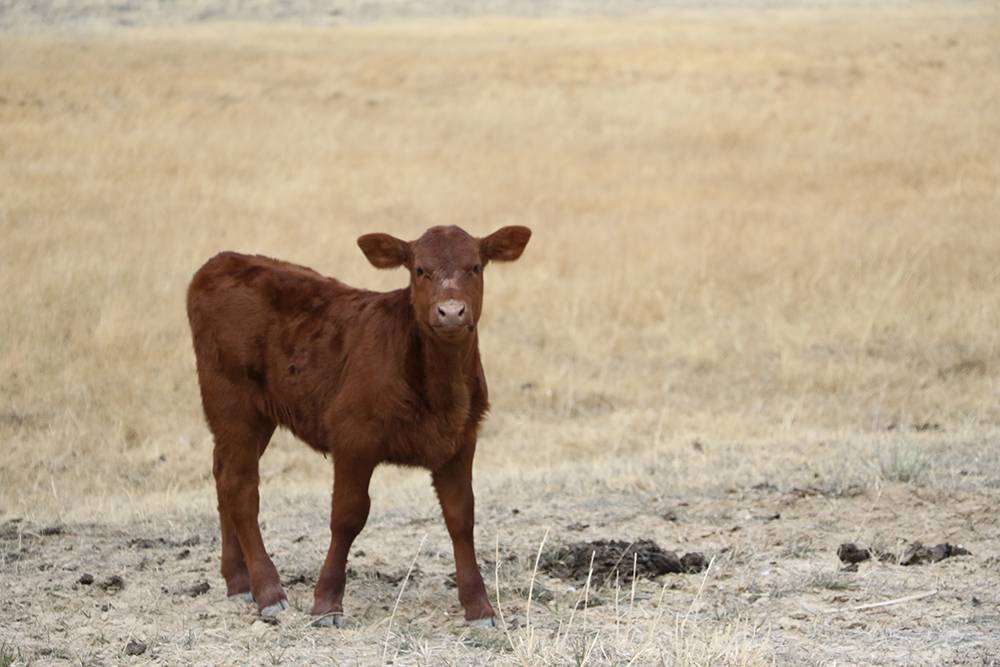Price slide puzzles: University of Wyoming Extension publication aids producers in fall feeder cattle prices

“Price slides are integral at all levels of beef cattle production,” says University of Wyoming (UW) Graduate Student Tevyn Baldwin. From a ranching family in Scottsbluff, Neb., Baldwin studies stocking rate, marketing date and price slides on yearling steers in northeastern Colorado.
Baldwin, who graduates this spring, recently co-authored a new UW Extension publication titled The Stocker Steer Quandary: The Price Slide along with her advisor, Interim Associate Dean and Professor in the Department of Agricultural and Applied Economics John Ritten.
Ritten shares, this publication is aimed toward helping producers understand how fall feeder cattle prices can be affected by weight, feed prices and finished cattle prices. All of these factors affecting price may impact decisions on how producers manage cattle in the spring and throughout the summer.
Study background
Baldwin notes there have been previous publications studying the price slides for lightweight calves in Wyoming. She and Ritten set out to expand the work in Wyoming, as well as make it applicable for yearling stocker producers in Colorado.
“The cattle weight data used in our model is gathered by researchers at the Central Plains Experimental Range (CPER) outside of Nunn, Colo.,” Baldwin says. “This price slide information helps with the understanding of economic returns for the cattle used in research at CPER.”
Producers within the Crow Valley Grazing Association on the Pawnee National Grassland provide yearling steers for the study, and many are forward contracted for the end of the grazing season.
Using the tool
The publication provides yearling stocker producers a tool to estimate price slides, come up with a feeder cattle price and figure out the value of gain in their operation.
“While the data originated in northeastern Colorado, any yearling stocker producer in the Mountain West can use the equation in the publication to estimate the price slide when they sell their calves,” Baldwin explains.
“A steep/wide price slide tells producers the price difference between weight classes is changing rapidly, so they should be more intentional about observing the markets in order to find the best time to sell,” she continues. “To come up with a feeder cattle price, they just have to plug in the weight, a selected corn price and a selected December Fed Futures price.”
Baldwin shares, if producers would like to come up with a range of prices for different weights, they can change the weight each time they use the equation, while keeping the corn and December Fed Futures price the same. In addition, produces can figure their value of gain to compare to specific costs in their operation.
“I most enjoyed looking at the extreme years and seeing how scenarios play out when corn and December Fed Futures prices are different,” says Baldwin. “It is retrospective, but it is the best tool we have for anticipating what the future might look like. Patterns and cycles are common in the beef industry and those who can recognize this can predict what will happen going forward.”
Producer benefit
The information on price slides and predicting futures prices provides producers with a resource Baldwin hopes will encourage them to become more intentional about observing the markets.
“Ranchers are creatures of habit: We calve at the same time, brand at the same time, sell at the same time, etc. every year,” she says. “But, sometimes breaking those habits and getting out of the repetitive rut can make a huge difference in the bottom line and breaking even or earning a substantial profit.”
She shares, something as simple as recognizing patterns in the corn market and the resulting impacts the calf market can clue producers in to the possibility of selling two weeks or a month earlier than normal.
“I think it is important to note this is not a crystal ball – we cannot perfectly predict what will happen with absolute certainty,” Baldwin states. “Instead, we can manage more adaptively and become better at making those predictions over time.”
Averi Hales is the editor of the Wyoming Livestock Roundup. Send comments on this article to roundup@wylr.net.





